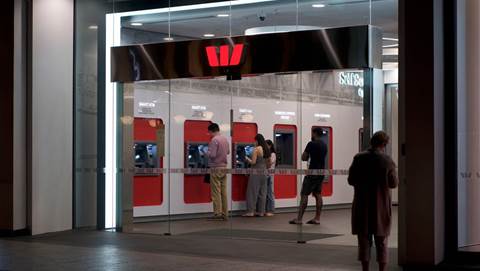ANZ Banking Group is realising incremental benefits from adopting generative AI across its IT service desk environment despite initial misgivings about the technology’s potential return on investment.

The bank has started using Now Assist, a collection of generative AI tools that augment a ServiceNow instance, to build up its IT service management (ITSM) capabilities and improve day-to-day workflows.
Key use cases include summarising incident closures and resolutions, generating product change summaries, and improving system health monitoring.
Speaking at the ServiceNow World Forum in Sydney, ANZ product area lead Jamie Stanton said the bank took a measured approach to adoption, progressing “one percent at a time” amid concerns over data quality, security and tangible return on investment.
“It took a leap of faith from our management to go, ‘We know we want to go on this journey’,” he told the audience.
“But we [knew] it's important to start now, so that when we move down the agentic path, we're able to get the most value we possibly can. So we said, ‘Let’s just do this’.”
Rather than embarking on an expensive data overhaul, the team focused on building capability gradually, layering new use cases and improvements over time.
“We're a bank - we believe in compound interest. What we wanted to do was make sure we started that journey, even though the uptake wasn't as great as we wanted it to be.
Instant resolution
One of ANZ’s early GenAI use cases focused on summarising service desk incidents, an initiative that also helped the team steadily build capability.
“Anyone who’s worked on a service desk knows what incidents get closed: it’s always ‘fixed’, ‘done’, ‘sorted’,” Stanton said.
“We've got all these incidents in there, but we haven’t actually been able to turn them into knowledge articles because we haven't invested the time to go and do that.
“With GenAI, we can press the button, and we're getting instant resolution. We're getting closure notes that we're able to turn into knowledge articles.”
Over time, these articles will help support staff resolve issues more efficiently, while also providing training material for virtual agents, he added.
More value-add activity
Another focus for ANZ is improving the health and sustainability of its eight-year-old ServiceNow instance, without taking resources from delivering future-focused tech initiatives.
“We've got skipped files, we’ve got health scan reports, we’ve got tech debt that we want to look at, but it takes so much time and effort, Stanton explained.
“We're already moving and doing delivery for the next big thing, so we don't have enough time to go back and make sure that the platform's sustainable and resilient.”
To address this, the team is embedding GenAI into routine maintenance tasks, referred to by Stanton as “starter day activities.”
These include basic checks like reviewing logs and monitoring scheduled jobs.
“We don’t even need a human in the loop with those things. What’s the information we need and when do we need to get it done, and just do it,” he said.
“This is going to be really exciting because it's a business-as-usual activity that we're wasting time on when we would be doing more value-add activity.”
The last use case Stanton referenced is using GenAI to manage and stay ahead of technology product changes.
This is being used to generate executive summaries, identify missing steps, and flag whether additional testing is required before changes are pushed through on ServiceNow.
“It’s not just about saving time,” Stanton said. “It’s about improving the quality of checks we’re doing.
“Plus, the resilience that the platform is [improved] because I'm not running incidents. I'm not creating issues. I'm not wasting time and effort fixing those problems.
“[It's] put a lot more confidence back into my hands,” he added.
Stanton, meanwhile, said that these use cases only cover ANZ's ServiceNow and IT support environment.
“Our 12-month roadmap is so exciting for [the ServiceNow] platform," he said.
"But there are so many opportunities for us to [use AI across the enterprise]. We're about to do the security piece, and that's around incident resolution summaries. And then it’s going to be in risk and HR.
"It’s just going to explode."











 iTnews Executive Retreat - Security Leaders Edition
iTnews Executive Retreat - Security Leaders Edition












_(1).jpg&h=140&w=231&c=1&s=0)



